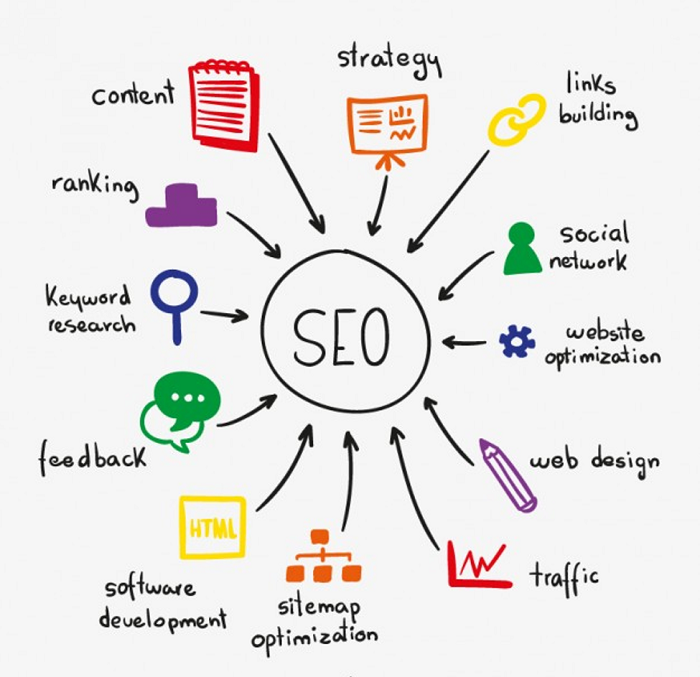5 Easy Tips to Boost Your Website Rankings

SEO is often misunderstood by so many people.
On the one hand, many people believe SEO is a holy grail, the get-rich-quick tactic that can magically transform your marketing effort to generate leads and grow revenue.
On the other hand, many people believe that SEO is very hard, if not impossible.
So, to address the confusion, here is a quick guide featuring five easy and actionable tips to properly execute your SEO strategy:
1. Content Is King, Literally
SEO in its purest sense is a way—the way— to promote your website’s content.
So, the most important factor in getting your site ranked on Google is the quality (and relevance) of your content, period. On the other hand, no amount of SEO optimizations can help low-quality content.
In other words, SEO is simply a way to amplify your content’s performance in organic SERP, and not a cheat engine to magically improve non-performing content.
While content SEO is a very broad subject on its own, there are several main areas to focus on:
I). Make sure you are targeting the right keywords with the content. However, be careful not to overuse them (use a keyword density tool to double check your content). Just use the target keywords naturally and include semantically-related words. Focus on readability and comprehensiveness.
II). Proper keyword research is key. Make sure you are targeting the right keywords according to the audience’s search intent and your SEO objective(s).
III). Obviously, copywriting is an important factor. Aim to engage and convince readers, and this guide by Neil Patel on SEO copywriting might help.
IV). The structure is very important in maintaining the audience’s engagement. Use white spaces appropriately, you don’t have to fill all the nook and cranny with content.

2. Link Building: Quality VS Quantity
Backlinks—or inbound links—are still the most important ranking signal for Google SERP this year.
In a nutshell, a backlink is a hyperlink from a third-party website pointing to your site, and in the world of SEO, a backlink acts as a ‘vote of confidence.’ When a website links to yours, it’s saying that your site—or specific content on your page— is credible and trustworthy. When the backlink is coming from a high-quality, relevant website, it is obviously more valuable.
It’s important, however, to understand that in the past few years or so, Google is getting better at recognizing the quality of your backlinks’ sources, and so, the quality of your backlink is now more important than quantity. This fact will be even more important this year and onwards as Google’s algorithm is getting better.
In fact, getting too many low-quality backlinks at one time can get your site penalized, even permanently in severe cases.
In general, we should ‘only’ aim to get 3 to 5 high-quality backlinks every month. Obviously, however, this can be easier said than done.
With that being said, here are some principles in building high-quality backlinks:
I). Again, content quality is key. If your content is good and relevant, you will get these backlinks sooner or later, and vice versa: no amount of link building tactics can help bad content.
II). Relationships are important. Build healthy relationships with important sites and influencers in your industry/niche. Relationships are the most reliable, sustainable sources of high-quality links.
III). Give them reasons to link your page—the ‘link hook’. For example, publish original, unique data like an original research report, aesthetically-pleasing infographics/images, and so on.
3. Structured Data Markup for Featured Snippet
Nowadays, more than 40% of search queries feature a rich snippet as their results. Since they are positioned above the top organic search result—this is why a featured snippet is often referred to as ‘position 0’ —, being featured as a rich result should be one of your main SEO priorities.
With that being said, implementing a proper structured data markup is one of the prerequisites of getting featured as a rich snippet, and it is still a fairly underutilized SEO optimization even today.
Structured data markup (mainly schema.org), is in a nutshell, a series of language markups to assign properties and attributes to the information included in our content. For example, if it’s a review content, we can assign markups to the different elements in the content (price, feature, star ratings, etc.) so Google can properly recognize it and display the correct information.
Besides the benefit of getting featured as a rich snippet, proper structured data markup will also provide better user experience, which we will discuss below.
4. Optimize for User Experience Metrics
Ever since the introduction of Google Rankbrain—Google’s AI-based algorithm—in 2016, user-experience metrics are now direct SEO ranking factors, especially two key metrics: bounce rate and dwell time.
I. Bounce rate refers to the percentage of visitors who left your site after viewing just one page on your site (it doesn’t matter if this visitor viewed the page for one minute or one hour).
II. Dwell time, on the other hand, refers to the total amount of time a user spends on your site (they can view just one page or 100 page, but it’s the total amount of time that matters.)
In general, these two metrics measure how invested and engaged the user is on your website. So, optimize your website to keep these visitors for as long as possible, and here are some areas you can optimize:
- Again, your content is key. If your content is good and if you have a lot of content that is good, then you can maximize dwell time.
- Mobile-friendliness (or mobile-responsiveness) is important. More than half of online traffic comes from mobile devices.
- Page load speed. People will leave your page if it loads too slow.
5. Consistency Is Key: Monitor and Evaluate
We have to remember that SEO is a long-term game, and we should expect to invest at least 6 to 12 months before we can see significant results—that is, ranked on the first page of Google SERP.
So, monitoring and evaluating your SEO progress and marketing metrics so you can maintain consistency are very important. Here are some key metrics to evaluate:
- Keyword ranking, fairly obvious, check how your keyword ranking is climbing steadily overtime. If it suddenly dropped, you might need to make adjustments
- Organic traffic, if your ranking is fairly high but the generated traffic is low, you have a problem
- Bounce rate and dwell time, as we have discussed above
- Percentage of returning visitors. In general, 30% of returning visitors is good for a mature site (it should be higher for brand-new sites with fewer unique visitors).
- Load speed. As mentioned, your site’s load speed is a very important factor nowadays.
Conclusion
Improving the five areas we have discussed above is a surefire way to improve your site’s SEO performance. However, maintaining consistency is still a very important factor, considering the fact that SEO is still a long-term game.
Monitor your progress, evaluate, and re-optimize when necessary. By being consistent, we can steadily climb into the first page in 12 months.





















